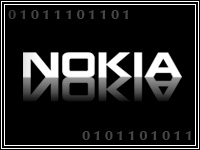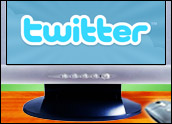
During the recent Hollywood writers’ strike, Joss Whedon found the cure for all his sudden downtime. The man who gave us “Buffy the Vampire Slayer” and “Firefly” created a genre-busting musical about a mad doctor with a bad case of evil-mastermind-wannabe inferiority complex.
And the only place to fill this prescription for cult horror-comedy? The Internet.
Whedon, using his own money, called up some actor friends — including “How I Met Your Mother’s” Neil Patrick Harris — and shot on unused Universal Studios lots. The result is “Dr. Horrible’s Sing-Along Blog,” and all the hype generated within the blogosphere reportedly crashed servers for the show’s Web site after the first episode was made available for viewing Tuesday. Hulu reportedly also crashed after featuring the show.
A Web. 2.0 Phenomenon
“Dr. Horrible” is the latest example of unique media content bubbling up from the Internet to find an audience and gain publicity. It joins a list that includes “Quarterlife,” the Funny or Die Web site and the Web-only episodes of the CW network’s teen drama “Gossip Girl.”
Like some of those examples, “Dr. Horrible” is free of studio interference and traditional marketing. Then again, we’re not talking about bargain-basement entertainment made by amateurs: The team behind “Thirtysomething” created “Quarterlife,” and actor/comedian Will Farrell is behind Funny or Die.
“If you’ve made your money and you’ve already got your fan base, then this is a great area of experimentation,” Bobby Tulsiani, online video analyst for JupiterResearch, told the E-Commerce Times. “It’s why big actors do independent movies: It allows them to stretch [their exposure]. … That’s kind of what the Web is emerging as: the indie equivalent.”
Translation to Mainstream Media Success?
Yet while some independent movies have generated lots of box office cash worthy of a major studio’s efforts, there hasn’t been a case yet where a Web-only production has successfully made the jump to mainstream media. NBC took a chance on a TV version of “Quarterlife,” but audiences didn’t seem to stick around past the quarter-hour. It was canceled after one episode.
“The general theme seems to be [attracting a] large audience, but the potential for large revenues doesn’t match,” Tulsiani said. “The best position to be in, in some ways for these shows, is not the individual show itself, but the person or company that aggregates all these shows. If I can put 100 of these things — Lonelygirl, “Dr. Horrible” — in one place, like iTunes or Veoh, then I’m in a position to win because everybody comes to me to find these shows.”
Follow the (Future) Money
Two more commercial-free, 15-minute segments of “Dr. Horrible” are planned for online release this week, but Whedon reportedly has said that a movie and a Broadway show could be in the works. As of now, the only revenue generated by a show about a mad doctor who is forced to take voice lessons to work on his evil laugh is the US$1.99 that iTunes is charging to view all three episodes.
As of now, with online and traditional media both complementing and competing with each other, the challenges to match dollars to hype remain, Tulsiani commented.
“If the money isn’t here today, that doesn’t mean it won’t be here tomorrow. We’re foreseeing that march toward ad dollars,” he noted. “This is laying the groundwork for people to come along in later years and push this and pioneer it even further.”























































Social Media
See all Social Media